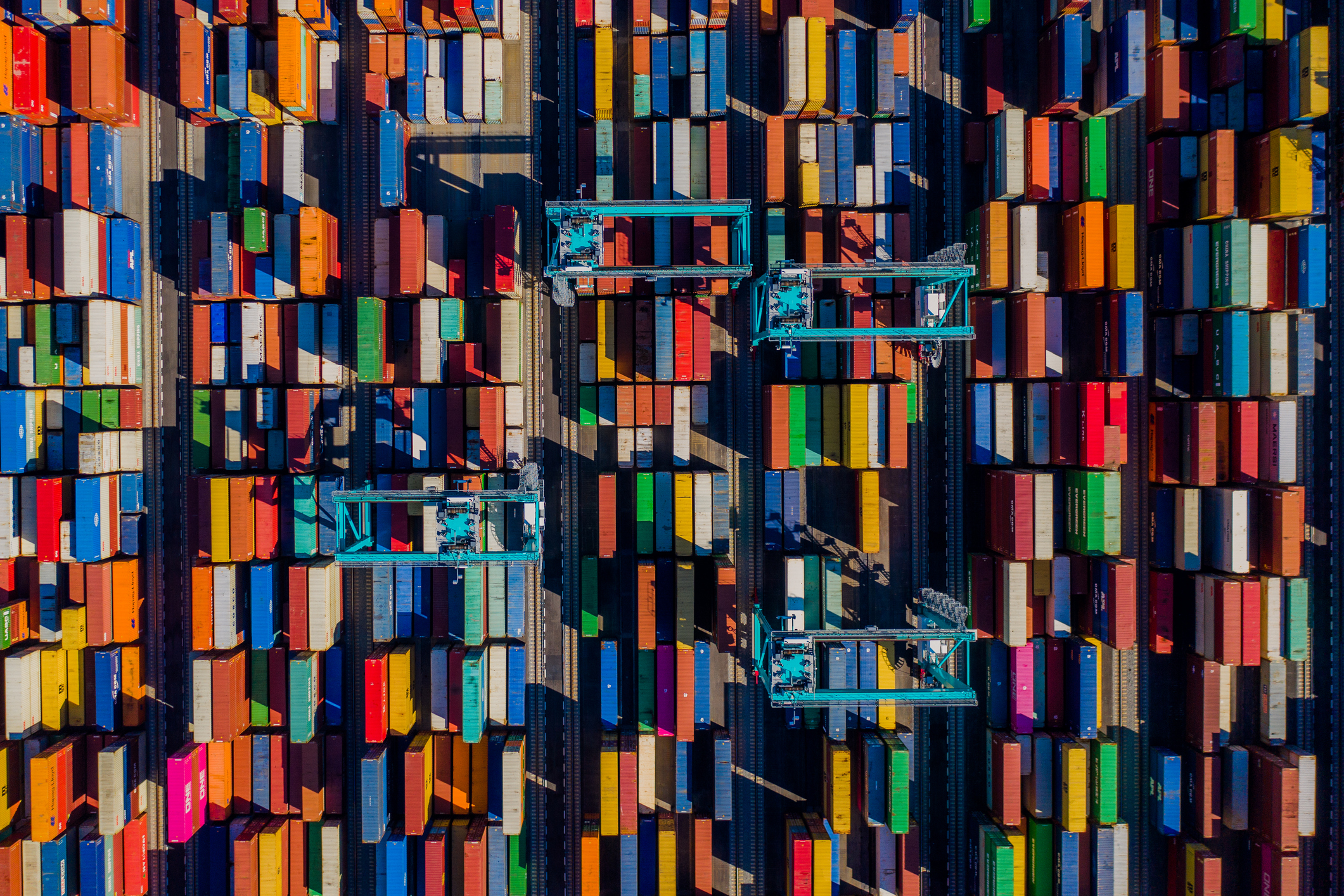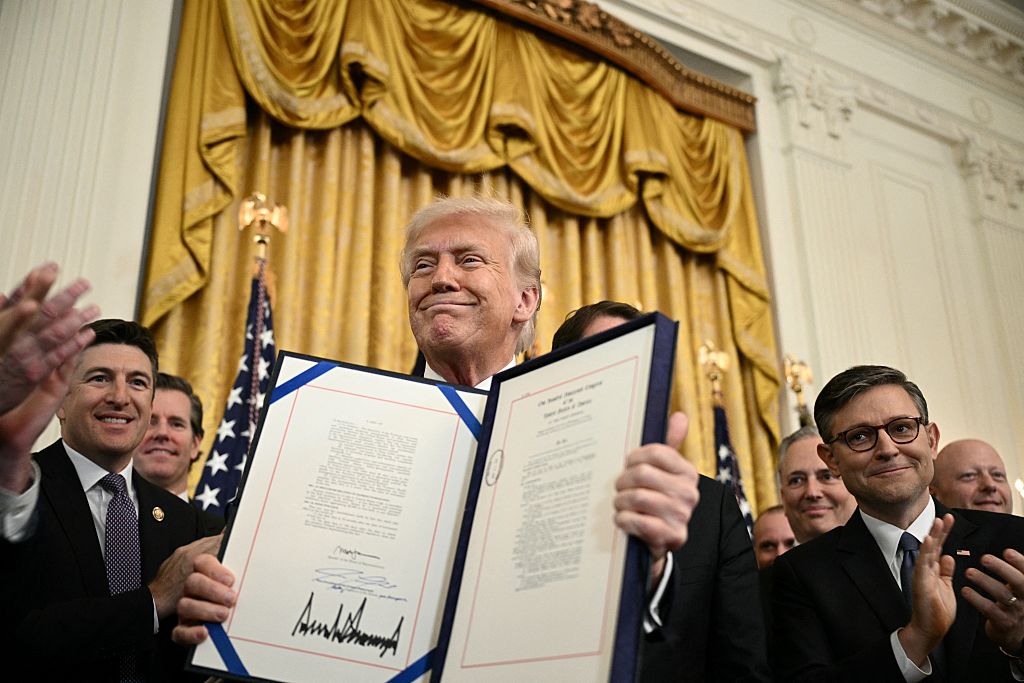Is local production making a comeback?
Companies return production closer to home and shorten their supply chains due to the pandemic and geopolitical turmoil. How should investors react?


Over the past 50 years, some big manufacturing companies have moved their factories and plants from the US and other high-income countries to China, seemingly to take advantage of lower labour costs. After apparently booming in the 1980s, 1990s and even the 2000s, however, this “globalisation of production appears to have started to slow down, and in some cases has even reversed”, says Rob Lanphier, a partner at investment bank William Blair. Some of the shift has been from China to other developing countries, but state subsidies and an interventionist industrial policy mean that some of it is coming back home to the West. What does that portend for the economy and individual companies?
Is production coming home?
“It’s impossible to dispute” that it’s happening, says Lanphier. Significant “onshoring” (or “nearshoring”) is taking place in the US and other industrialised nations, and this is “an emerging secular trend, rather than just a one-off”. Lanphier points to a report that he and Jim Jones wrote in December 2023, which uncovered several key pieces of evidence showing that there has been a dramatic shift in companies’ behaviour since 2019. The number of companies that are mentioning reshoring in their public filings has shot up, for example, from less than 10 as recently as 2021 to around 100 in 2023.
Talking about bringing production home and actually doing it are, of course, two different things, as England football fans can attest. But there is evidence that American companies are taking tangible steps to shift their supply lines closer to home. Lanphier’s and Jones’s report notes that Chinese imports relative to sales made by US-listed companies have fallen back to levels not seen since the global financial crisis of 2008-2009. At the same time, capital investment in US manufacturing has shot up and now stands around 12% above its trend over the past few decades. Lanphier believes change is “happening right across the board”.
MoneyWeek
Subscribe to MoneyWeek today and get your first six magazine issues absolutely FREE

Sign up to Money Morning
Don't miss the latest investment and personal finances news, market analysis, plus money-saving tips with our free twice-daily newsletter
Don't miss the latest investment and personal finances news, market analysis, plus money-saving tips with our free twice-daily newsletter
US companies are undoubtedly increasing the nearshoring or reshoring of their supply chains, agrees Charles Bathurst-Norman, an investment director at JM Finn. In his view, several industries are embracing this new trend particularly quickly. In the vehicle and electronics sectors, for example, companies such as General Motors, Intel and Nvidia have announced “significant investments in domestic manufacturing facilities”. Some firms in the aerospace industry, such as RTX Corporation, are doing the same as “specialised trade agreements and incentives make nearshoring a strategic move” for the sector. Within pharmaceuticals and healthcare, companies such as Eli Lilly have also brought domestic production home.
Businesses are also switching investments from China to other countries that are closer to home. Consumer goods firms and retailers, for example, are “increasingly sourcing materials and products from nearby countries to enhance supply-chain resilience” and to enable them to react more swiftly to changes in demand from consumers, says Bathurst-Norman. Walmart and Procter & Gamble are examples of large conglomerates that are now trying to source more products from nearby regions, rather than from a handful of suppliers far away in China, to enable them to serve their customers better.
Such “friendshoring” can be particularly useful for the more labour-intensive parts of the production process, says Ben Laidler, head of equity strategy at Bradesco BBI. Companies tend to move the high value and complex parts of the production process to their home country, but send the rest to countries such as Mexico, or similar middle-income countries where wages are much lower than in the US. A classic example is Apple. In 2017, Apple had roughly half of its factories in China. Last year, it was just 30%. But Apple’s shift away from China hasn’t involved moving all production back to the US, just shifting it to other, friendlier countries in Asia, such as Korea, Taiwan and Vietnam, says Laidler (although Taiwan’s vulnerability to a Chinese attack makes that a risky bet). “There is plenty of anecdotal evidence,” he adds, that “companies are much more interested in Vietnam than they used to be”, thanks to low labour costs and the fact that it is considered less politically risky than China. But Laidler cautions that “even supposedly friendly markets are seen as much riskier than they used to be”.
The return of industrial policy
Perhaps the most obvious reason for this reshoring is the increasing tension between China and the West, especially the US, which is creating a protectionist backlash. Some have blamed Chinese subsidies and aggression over Taiwan for the deterioration in economic relations between the two main superpowers, but Laidler thinks that the “original sin” was “the Trump administration’s decision to start a trade war with China”. This began with a round of increased tariffs in 2018, which have since been followed by several additional rounds.
As well as creating trade barriers, the US government’s attempts to reduce its economic dependence on Beijing means it has also begun pursuing an active industrial policy, “paying companies to relocate in an attempt to bolster several key industrial sectors”. An example is the CHIPS Act, which was signed into law by president Joe Biden in 2022, with the aim of building up America’s semiconductor industry through various incentives.
It’s certainly no coincidence that reshoring “is taking place fastest in industries where the US Federal government has a lot of control, either by providing subsidies or by being the main customer”, says Josh Harlan, founder and managing partner of Harlan Capital Partners. This is particularly the case in defence and related industries, such as semiconductors.
But America isn’t the only country taking a much more active approach to getting its manufacturing sector to a place where it can either replace China, or at least provide an alternative should tensions spiral out of control. The Japanese government, too, is using subsidies to stimulate “heavy investment” in several sectors “that are of particular strategic interest to Japan”, says Naomi Fink, global strategist and managing director at Nikko Asset Management. Some of these projects are related to green industries, others to economic security, such as the “massive chip-making plants” currently being built in Hokkaido and Kumamoto.
Even Canada, traditionally seen as a country with a more open approach to trade, is waking up to the threat from China and pursuing a more active industrial policy. It has greatly restricted Chinese investment in mining projects, for example –“to the extent that several Chinese companies have been forced to divest their stakes in Canadian mines”, says Greg Eckel, portfolio manager for Canadian General Investments. Canada is also taking steps to encourage overseas carmakers to relocate production there, giving large subsidies to LG Energy Solution and Stellantis to build large plants to manufacture batteries for electric vehicles. Eckel expects Ottawa to step up efforts to get key manufacturing plants to relocate.
And tensions between China and the West won’t be going away anytime soon, says Paul Tucker, a former deputy governor of the Bank of England, a research fellow at the Harvard Kennedy School's Mossavar-Rahmani Center for Business and Government, and author of Global Discord: Values and Power in a Fractured World Order. There may be “periods of accommodation and even cooperation”, but there will also be times “when conflict looms”. Expect “tense wariness” to continue, probably for decades, “maybe well into the next century”. As a result, both nations and companies will have to avoid being overdependent on China in the future, unless they want to end up being exposed to major disruption “if things turn sour”.
How geopolitical risks are impacting production
“Basic order in the world is a precondition for globalised economics,” says Tucker. The rise of tensions beyond the ones between China and the West are, then, putting globalisation into reverse gear, with companies reeling in their extended supply lines. Indeed, “countries seem to be losing the ability to work with each other”, says Eckel. An obvious example is Russia’s invasion of Ukraine – the “resulting sanctions and public backlash forced many companies to pull out of Russia, or abandon investments, at short notice”.
One issue of particular geopolitical concern at the moment is the conflict around the Red Sea and Suez Canal, says Lanphier. Around 15% of global sea traffic passes through this area, which has been hit by attacks on shipping carried out by Iran-backed Houthi rebels. This has caused insurance rates to rise, pushing shipping costs up. Tehran has become much more aggressive in the wake of the 7 October terrorist strike on Israel carried out by Hamas, another Iranian proxy, and the “risks don’t look like they are going away anytime soon”. The cost of shipping goods is likely to remain high for some time.
The experience of the pandemic provides another reason why companies appear to be ditching far-flung supply lines in favour of moving production closer to home, says Lanphier. Not only did the restrictions imposed by governments – especially factory shutdowns – disrupt shipments, but they also “led to massive changes in the type of goods that consumers were buying”. Both of these factors influenced companies’ decisions “to build supply chains that were much more secure, and that could respond to changing demands”, sometimes on an hourly basis.
Challenges associated with bringing production back home
Bringing production back home is not, however, cost-free, of course, especially if the move is prompted by geopolitics rather than economics, says Gervais Williams of Premier Miton. In his view, one of the main benefits of globalisation is the rise of “super suppliers”, such as Apple. These companies have been able to sell products around the world, using economies of scale to spread the costs of research and development across billions of consumers. Outsourcing production also reduced the amount of capital that had to be tied up, with the use of low-wage economies further pushing down production costs.
Williams predicts reshoring will throw this process into reverse. Not only will firms have to pay more for labour, but protectionism and trade barriers mean that they may have to produce for local and regional, rather than global markets, at a much smaller scale. While firms can (and will) try to cut costs with machinery and automation, this will require them to be much more capital-intensive. At least some of these costs will end up being passed on to consumers, resulting in higher inflation. This in turn will force central banks to raise interest rates in an attempt to keep a lid on prices, leading to a higher cost of capital and lower valuations.
Supporters of nearshoring like to talk about “carbon miles” and the environmental cost of shipping products around the world. Williams, however, argues that, even on those terms, reshoring is less than optimal. In his view, the key determinant of a product’s carbon emissions is efficiency. Given that “protectionism is inherently economically inefficient”, moving manufacturing back home will ultimately end up leading to more carbon emissions. Supply chains may be getting shorter, says Laidler, but they will “not necessarily become simpler, as a model based on outsourcing everything to China is simpler than having to manage operations in multiple countries”.
Is de-globalisation the way to go?
But even if deglobalisation does lead to higher costs for consumers, there will still be many winners from these new trends. After all, “we are citizens and workers as well as shoppers”, says Tucker. Harlan agrees. It is not necessarily always a bad thing if companies’ desire to maximise profit margins is occasionally forced to take a back seat in order to prioritise national security and the needs of society as a whole, he says. The higher wages and investment that result from nearshoring will also benefit manufacturing workers.
Some firms in particular sectors will end up doing well, and in some cases even better. Any move back to North America will benefit the engineering and construction firms involved in designing and building the required increased manufacturing capacity, says Eckel. There will also be greater demand for transport infrastructure to move goods and components around the US-Canada-Mexico trade area. Automation services will also be in greater demand. The “underlying force that manufacturing tends to move to where costs are lowest has not gone away”, says Tucker, but it is clear that it is now being “tempered by an even bigger interest than prosperity”.
This article was first published in MoneyWeek's magazine. Enjoy exclusive early access to news, opinion and analysis from our team of financial experts with a MoneyWeek subscription.
Get the latest financial news, insights and expert analysis from our award-winning MoneyWeek team, to help you understand what really matters when it comes to your finances.

-
 ‘Why I have ditched my Help to Buy ISA for cash savings and the stock market’
‘Why I have ditched my Help to Buy ISA for cash savings and the stock market’Without the 25% bonus, my Help to Buy ISA is effectively redundant, says MoneyWeek writer Sam Walker.
-
 Is your inheritance tax allowance cut if you sell to downsize or sell your home to pay for care?
Is your inheritance tax allowance cut if you sell to downsize or sell your home to pay for care?Downsizing relief is a little-known benefit that could save your loved ones tens of thousands of pounds in inheritance tax after you’ve died.
-
 The steady rise of stablecoins
The steady rise of stablecoinsInnovations in cryptocurrency have created stablecoins, a new form of money. Trump is an enthusiastic supporter, but its benefits are not yet clear
-
 Goodwin: A superlative British manufacturer to buy now
Goodwin: A superlative British manufacturer to buy nowVeteran engineering group Goodwin has created a new profit engine. But following its tremendous run, can investors still afford the shares?
-
 A change in leadership: Is US stock market exceptionalism over?
A change in leadership: Is US stock market exceptionalism over?US stocks trailed the rest of the world in 2025. Is this a sign that a long-overdue shift is underway?
-
 A reckoning is coming for unnecessary investment trusts
A reckoning is coming for unnecessary investment trustsInvestment trusts that don’t use their structural advantages will find it increasingly hard to survive, says Rupert Hargreaves
-
 Modern Monetary Theory and the return of magical thinking
Modern Monetary Theory and the return of magical thinkingThe Modern Monetary Theory is back in fashion again. How worried should we be?
-
 Metals and AI power emerging markets
Metals and AI power emerging marketsThis year’s big emerging market winners have tended to offer exposure to one of 2025’s two winning trends – AI-focused tech and the global metals rally
-
 King Copper’s reign will continue – here's why
King Copper’s reign will continue – here's whyFor all the talk of copper shortage, the metal is actually in surplus globally this year and should be next year, too
-
 The coming collapse in the jobs market
The coming collapse in the jobs marketOpinion Once the Employment Bill becomes law, expect a full-scale collapse in hiring, says Matthew Lynn